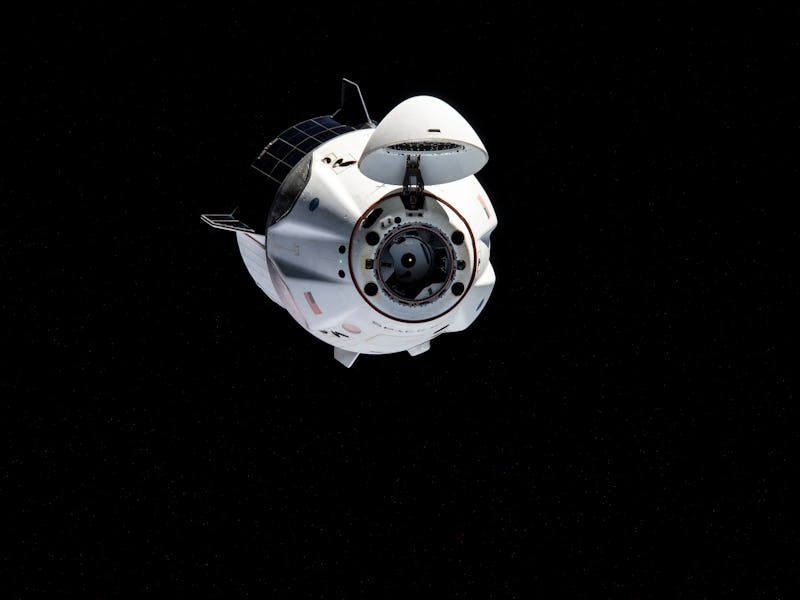SpaceX Crew-2: One NASA experiment could redefine how we explore deep space
A new experiment in solar sail technology will take flight thanks to the SpaceX Crew-2 mission.

In 2016, I sat down with Russian billionaire Yuri Milner, who was about to pledge $100 million to explore our nearest star system, Alpha Centauri. During the conversation, Milner pulled a satellite out of his pocket.
The satellite was a single printed circuit board, loaded with processors and sensors, about the size and weight of a Saltine cracker. Milner envisioned hundreds of these satellites attached to solar sails, a reflective surface that uses light for propulsion similar to how a traditional sail uses the wind. The fleet would then be blasted with high-powered lasers to propel it at 20 percent the speed of light. This would shorten the 137,000 year trip to Alpha Centauri to a 20-year timeline, he said.
While Milner’s project is still far from its estimated 2036 launch, he inspired a new generation of solar sails. Some experiments, like The Planetary Society’s LightSail 2, have thought bigger sails would be more efficient in capturing more light. The LightSail 2, equipped with an 18-foot square sail, has been orbiting Earth since 2019.
SpaceX Crew-2’s solar sail experiment
The Crew-1 being prepared for liftoff in 2020.
Now, a new experiment inspired by Milner’s vision is being sent to the International Space Station this month aboard the SpaceX Crew-2 mission. The Alpha solar sail measures about 1.8 feet by 1.8 feet, but is designed to more accurately reflect light than previous solar sail experiments. The sail is only 0.04 millimeters thick, or less than half the diameter of a human hair.
During its launch from the ISS, the Alpha system is held inside a CubeSat, or cube satellite, and will be released during the six-month window of Expedition 65. After drifting in orbit for three weeks, the CubeSat will open and release the sail. The sail is mounted with four ChipSatsm or chip satellites, which are used to track the location of the sail, collect flight data, and transmit that data back to the research team. Each ChipSat only weighs 4.2 grams and is outfitted with antennae that can track it in Earth’s orbit with an accuracy of 10 meters.
Despite being so thin, the polycarbonate plastic of the sail is laser-etched with a design that makes it retroreflective, similar to the design used by some stop signs that illuminate brightly when hit with car headlights. A retroreflective material specifically reflects light back towards the source of the light, rather than the light bouncing off and scattering at an angle.
Mason Peck, a professor at Cornell University and head of the Alpha project, says that this specific property makes the sail more reliable in the real world.
“If you hit [a traditional solar] sail at the wrong angle, or if the sail is wrinkled or bent in some funny way, that light scatters in the wrong direction,” Peck tells Inverse. “You get what amounts to an unintended behavior from the sail.”
An earlier solar sail design.
But since the light hitting the retroreflective surface is bounced straight back towards its source, the equation for estimating where the sail will go becomes easier. This is obviously important because you don’t want to accidentally shoot a giant laser at your solar sail, only to send it flying thousands of miles per second in the wrong direction.
“The light that reflects back off gives the sail a push in exactly a predictable direction. It’s like hitting it with a hose,” Peck says. “That normally wouldn’t work with light, but it works with a retroreflective sail.“
Retroreflective material is also routinely used in more traditional satellites, to track their position around the Earth. Since light is reflected directly back at its source, space agencies like NASA can rapidly fire lasers at the satellites and time how long it takes for the light to return. Based on that calculation, the satellite’s position can be calculated with high accuracy.
NASA’s Solar Sail future
While Peck is looking to shift the solar sail paradigm with smaller sails, NASA has funded two projects focused on making larger solar sails. The first, a satellite with an 86-square-foot sail called NEA Scout, is scheduled to launch in November 2021, hitching a ride with the Artemis mission to the Moon. From there, it will spiral on a two-year journey to take pictures of near-Earth Asteroid 1991 VG. The second mission is called Solar Cruiser, and will feature an 18,000 square foot sail. Solar Cruiser will gather data on further use of solar sails, and potentially collect data to warn us Earthlings about solar storms, according to NASA.
In the meantime, if anyone out there has a planetary-scale laser and wants to shoot it at the tiny Alpha solar sail, Peck says to give him a call. He could use the data.